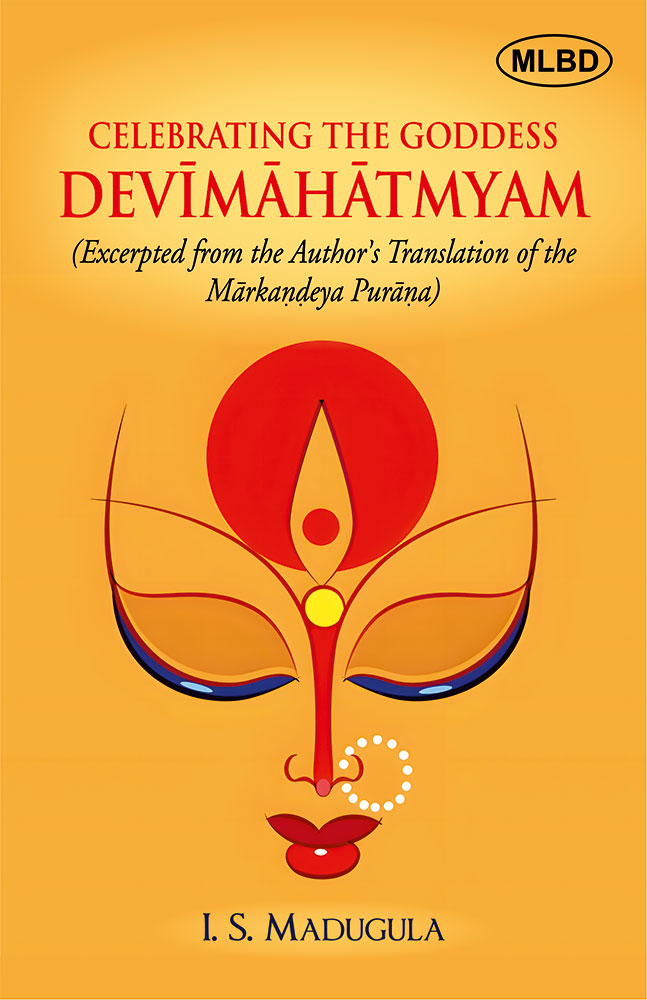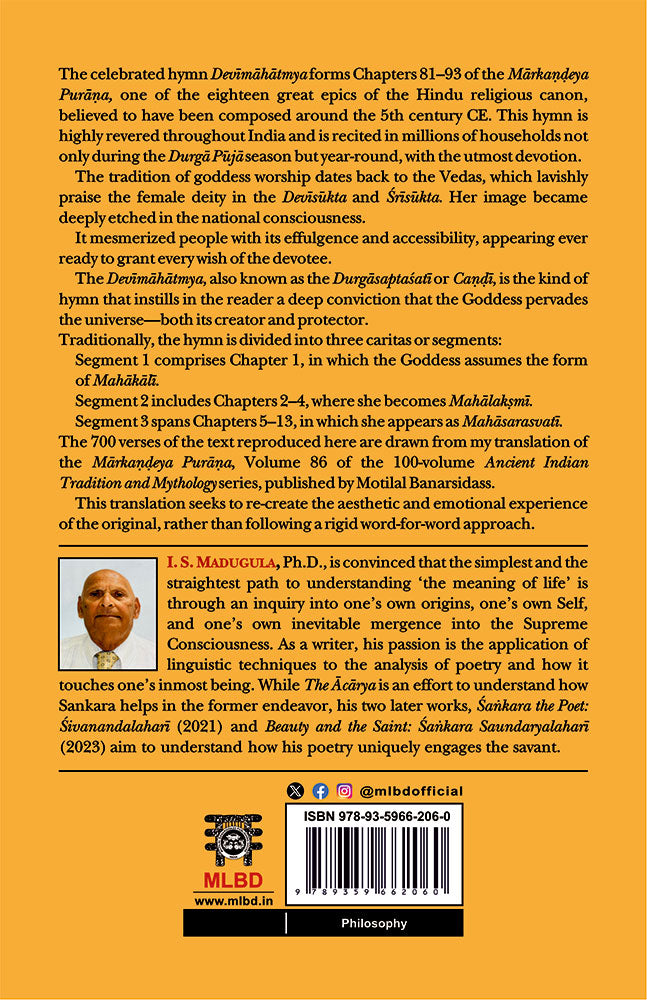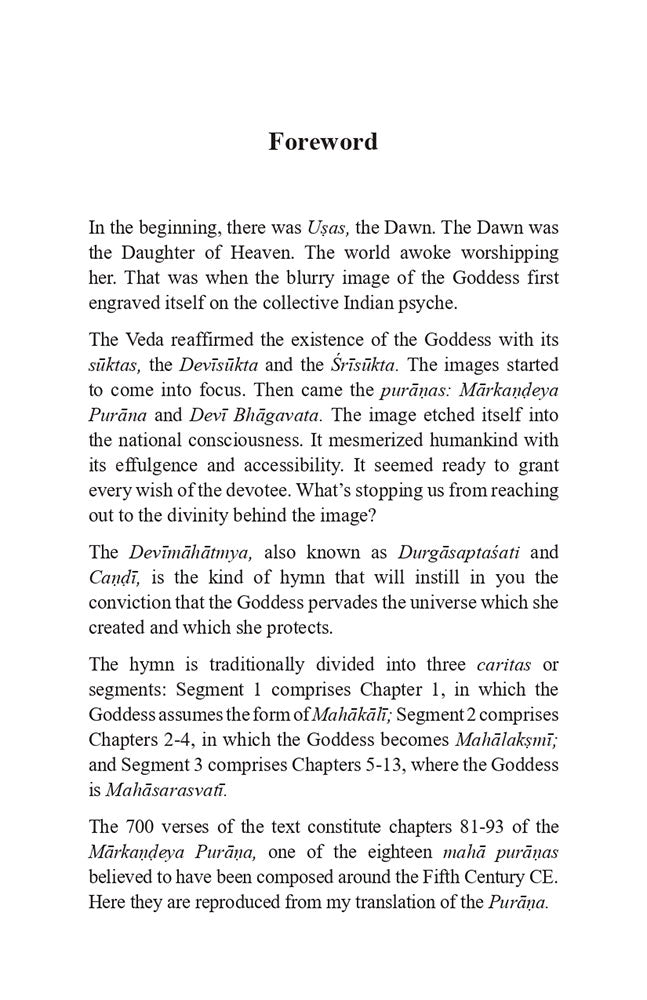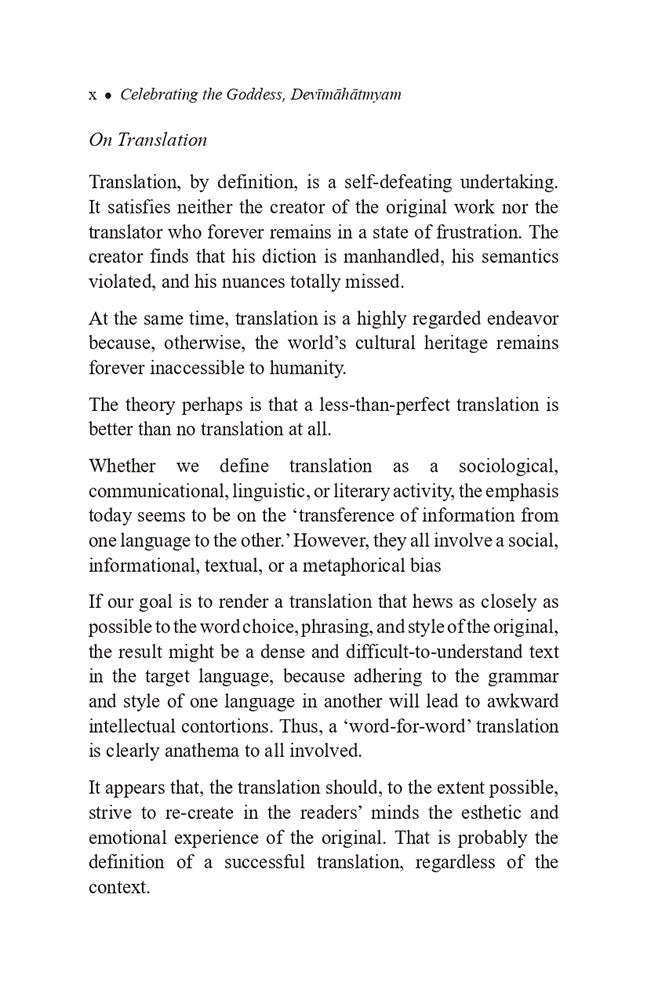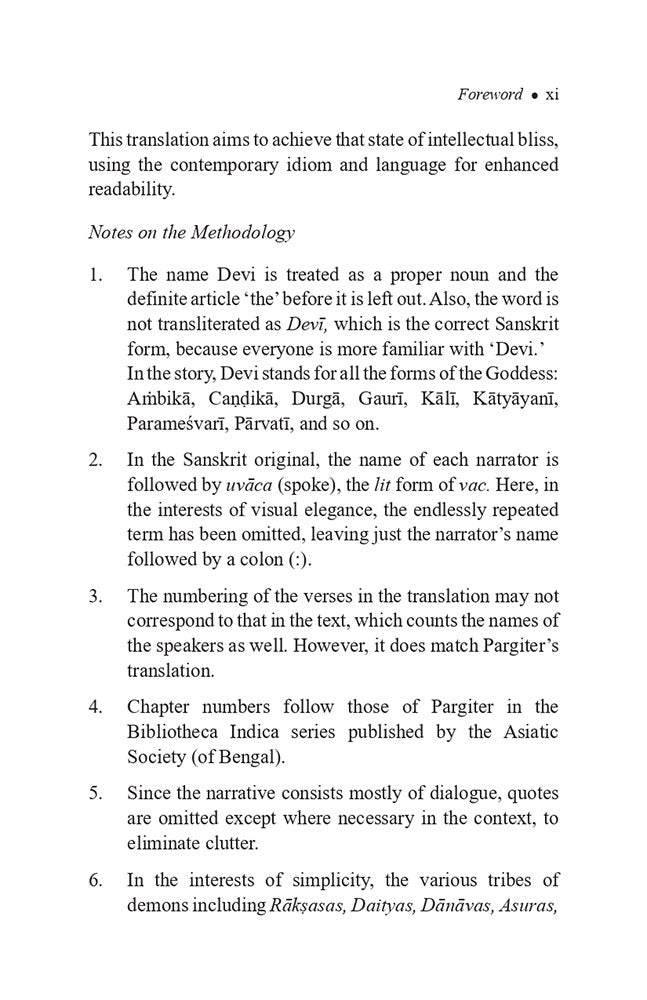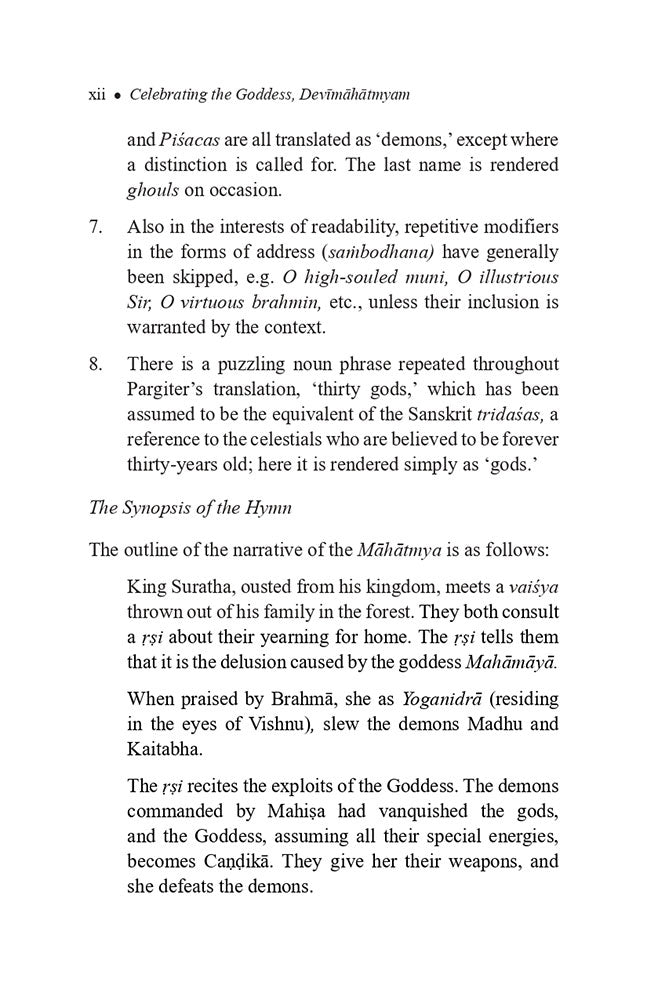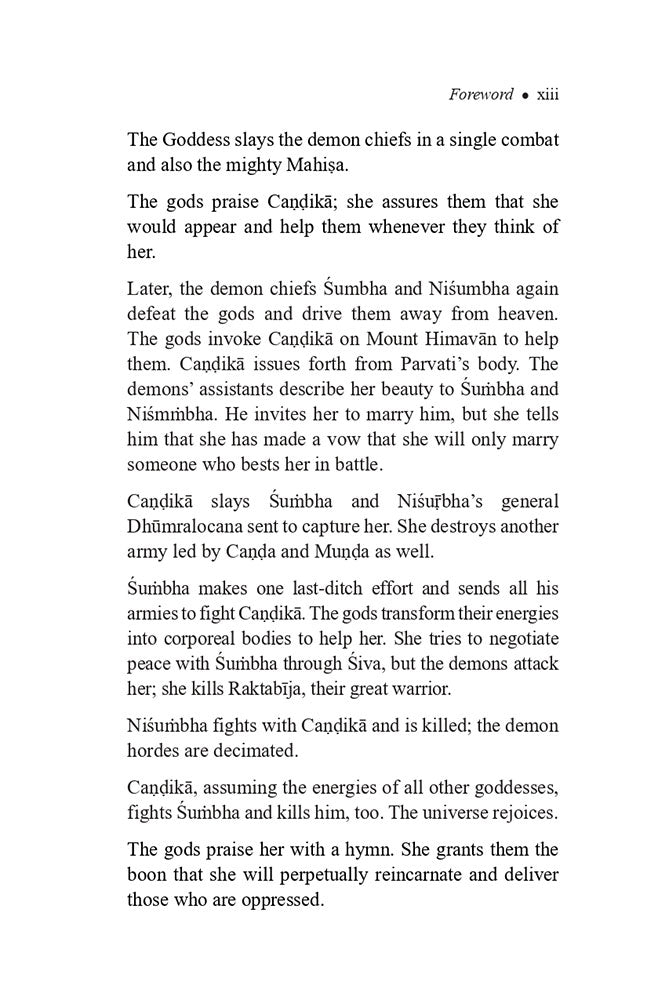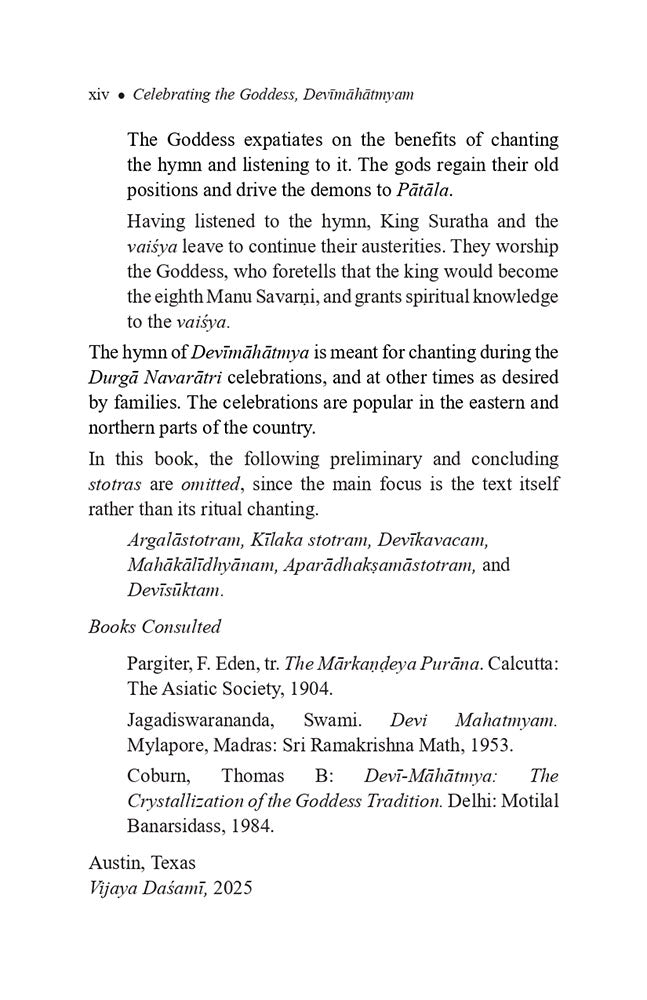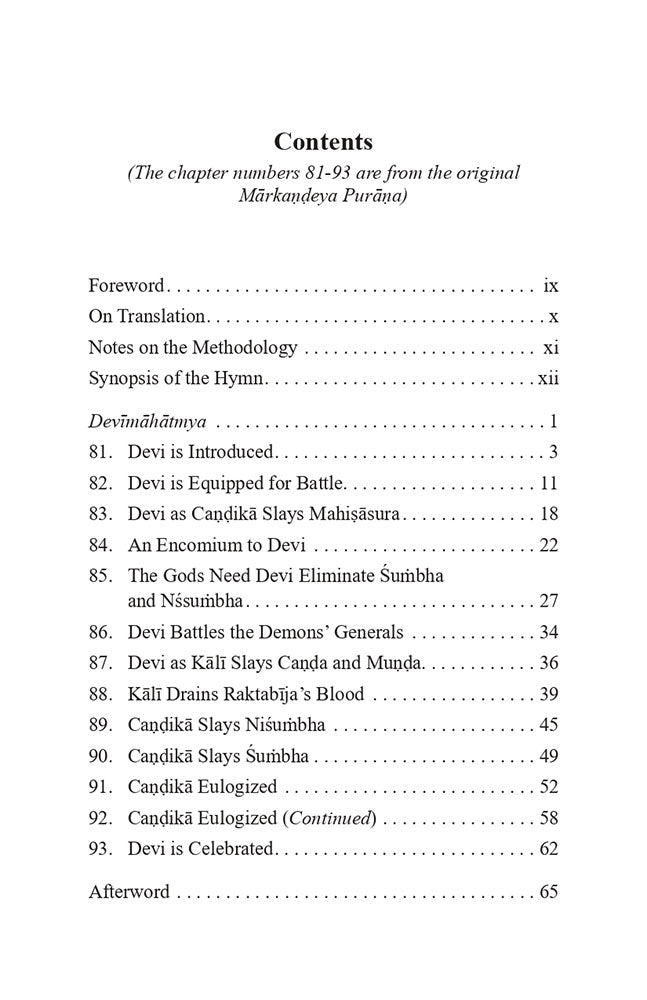Celebrating the Goddess Devimahatmyam (Excerpted from the Author's Translation of the Markandeya Purana)
Celebrating the Goddess Devimahatmyam (Excerpted from the Author's Translation of the Markandeya Purana) - Paperback is backordered and will ship as soon as it is back in stock.
Couldn't load pickup availability
The celebrated hymn Devīmāhātmya forms Chapters 81-93 of the Markandeya Purana, one of the eighteen great epics of the Hindu religious canon, believed to have been composed around the 5th century CE. This hymn is highly revered throughout India and is recited in millions of households not only during the Durga Pūjā season but year-round, with the utmost devotion.
The tradition of goddess worship dates back to the Vedas, which lavishly praise the female deity in the Devisükta and Śrīsükta. Her image became deeply etched in the national consciousness.
It mesmerized people with its effulgence and accessibility, appearing ever ready to grant every wish of the devotee.
The Devimahātmya, also known as the Durgāsaptasati or Candi, is the kind of hymn that instills in the reader a deep conviction that the Goddess pervades the universe-both its creator and protector.
Traditionally, the hymn is divided into three caritas or segments:
Segment 1 comprises Chapter 1, in which the Goddess assumes the form of Mahakali.
Segment 2 includes Chapters 2-4, where she becomes Mahālakşmi.
Segment 3 spans Chapters 5-13, in which she appears as Mahāsarasvati.
The 700 verses of the text reproduced here are drawn from my translation of the Markandeya Purāņa, Volume 86 of the 100-volume Ancient Indian Tradition and Mythology series, published by Motilal Banarsidass.
This translation seeks to re-create the aesthetic and emotional experience of the original, rather than following a rigid word-for-word approach.
-
Pages
-
Edition
-
Size
-
Condition
-
Language
-
Weight (kg)
-
Publication Year
-
Country of Origin
-
Territorial Rights
-
Reading Age
-
HSN Code
-
Publisher

